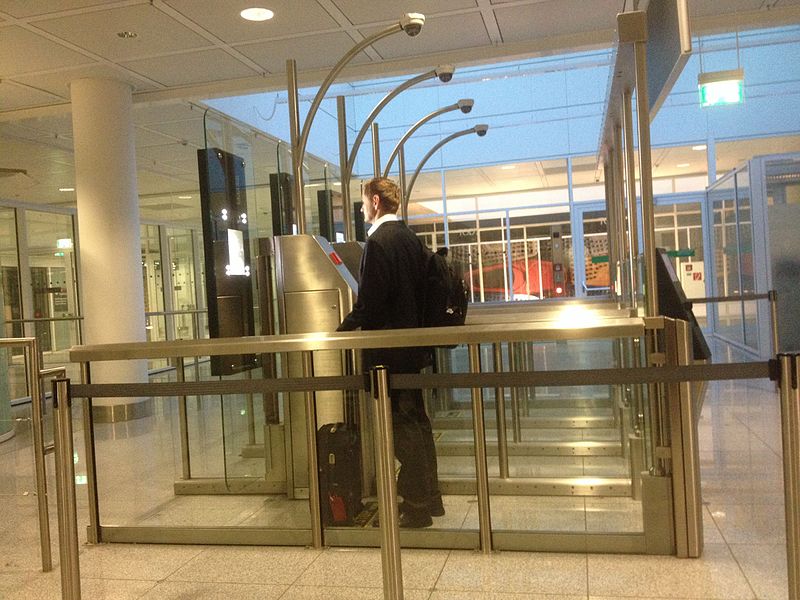The European Union (EU) is preparing for a significant overhaul in border management.
Starting November 10, 2024, the Entry/Exit System (EES) will be implemented, revolutionizing how non-EU travelers enter and exit the Schengen Area.
This advanced system is designed to boost security and streamline border crossings, but it also raises concerns about potential delays and privacy issues.
A Technological Upgrade for EU Borders
The EES represents a major shift from traditional passport stamping to a more sophisticated digital process.
Upon arrival at a Schengen border, travelers from outside the EU will use self-service kiosks to scan their passports. These kiosks will capture crucial information, including names, travel document details, fingerprints, and facial images.
EU Home Affairs Commissioner Ylva Johansson announced the launch date during a visit to eu-LISA, the agency responsible for the system’s IT infrastructure.
Johansson highlighted the EES’s role in bolstering border security, stating, “With the EES, we will know precisely who enters the Schengen Area with a foreign passport and monitor if people overstay, helping to address irregular migration.”
Who Needs to Use the EES?
The new system will apply to non-EU citizens entering the Schengen Area for short stays, such as tourists, business travelers, and others who don’t require a visa to visit Europe.
However, certain groups are exempt from the EES:
- EU citizens and their family members
- Residents of EU countries with long-stay visas
- Citizens of Andorra, Monaco, San Marino, and Vatican City
While the EES will cover most of Europe, it will not be used in Cyprus or Ireland.
It will, however, be applicable to non-EU Schengen countries such as Iceland, Liechtenstein, Norway, and Switzerland.

Potential Travel Hiccups
Although the EES aims to modernize border control, there are concerns about potential delays, particularly during peak travel times.
The UK government and travel industry experts have voiced worries about long queues, especially for ferry traffic between Dover and Calais.
To mitigate these issues, UK Transport Minister Guy Opperman has proposed a “six-month soft launch” to facilitate a smoother transition. This plan might include flexible measures to maintain efficient traffic flow in the event of delays.
Next Step: ETIAS
Approximately six months after the EES implementation, a new system called ETIAS (European Travel Information and Authorization System) is expected to roll out.
ETIAS will require visa-exempt travelers to obtain online pre-travel authorization before visiting the Schengen Area.
Although the exact start date has yet to be announced, ETIAS is anticipated to begin in 2025.
Working in conjunction with the EES, ETIAS will add an additional layer to the EU’s border management framework.
Travelers will need to apply online prior to their trip, paying a €7 fee for an authorization valid for three years.
A New Approach to Entering and Exiting the EU
The introduction of the EES and ETIAS will bring substantial changes to how people enter and exit the EU.
For short-term visitors, this means adapting to new border procedures and planning ahead for ETIAS approval.
The benefit is that once your details are entered into the EES, future trips should be more seamless as your information will already be on file.
For long-term visitors and migrants, the daily impact might be less obvious, but the EES will help authorities monitor overstays more effectively.
This could lead to stricter enforcement of visa regulations and potentially affect future visa applications for those who overstay their permitted duration.
These systems integrate into broader Schengen visa policies by enhancing the EU’s capacity to monitor and manage entries and exits, creating a more secure and efficient border management framework.
A Shift in Immigration Policy
The EES and ETIAS represent a notable shift in EU immigration policy.
By digitizing border controls, the EU aims to better manage migration flows and bolster security. This data-driven approach allows for more precise tracking of who enters and exits the Schengen Area, potentially influencing future policy decisions.
The enhanced data on travel patterns and overstays may lead to more targeted immigration policies and better management of illegal immigration.
Furthermore, the implementation of these systems highlights the EU’s commitment to leveraging technology to address complex immigration challenges.
As these tools evolve, they could set the stage for even more advanced border management techniques in the future.
A New Era in European Travel
The launch of the EES marks a significant transformation in European border control. While it promises to enhance security and efficiency, it also introduces new challenges for travelers and authorities.
As November approaches, attention will focus on how smoothly this digital transition unfolds.


